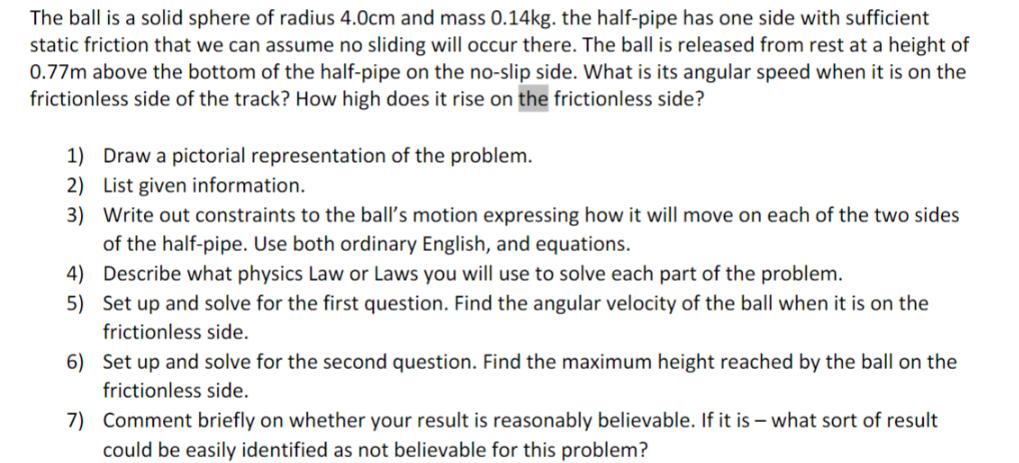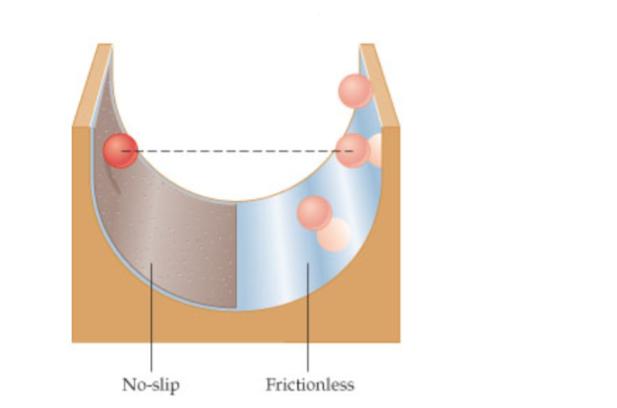Answered step by step
Verified Expert Solution
Question
1 Approved Answer
The ball is a solid sphere of radius 4.0cm and mass 0.14kg. the half-pipe has one side with sufficient static friction that we can


The ball is a solid sphere of radius 4.0cm and mass 0.14kg. the half-pipe has one side with sufficient static friction that we can assume no sliding will occur there. The ball is released from rest at a height of 0.77m above the bottom of the half-pipe on the no-slip side. What is its angular speed when it is on the frictionless side of the track? How high does it rise on the frictionless side? 1) Draw a pictorial representation of the problem. 2) List given information. 3) Write out constraints to the ball's motion expressing how it will move on each of the two sides of the half-pipe. Use both ordinary English, and equations. 4) Describe what physics Law or Laws you will use to solve each part of the problem. 5) Set up and solve for the first question. Find the angular velocity of the ball when it is on the frictionless side. 6) Set up and solve for the second question. Find the maximum height reached by the ball on the frictionless side. 7) Comment briefly on whether your result is reasonably believable. If it is what sort of result could be easily identified as not believable for this problem? No-slip Frictionless
Step by Step Solution
There are 3 Steps involved in it
Step: 1

Get Instant Access to Expert-Tailored Solutions
See step-by-step solutions with expert insights and AI powered tools for academic success
Step: 2

Step: 3

Ace Your Homework with AI
Get the answers you need in no time with our AI-driven, step-by-step assistance
Get Started


